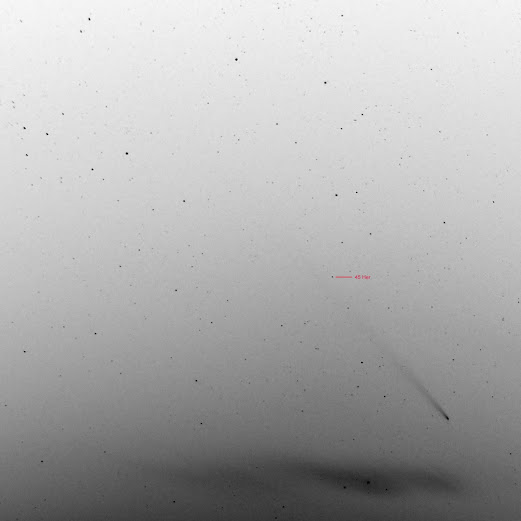Sunday night we were treated to a clear night and late in afternoon I dragged the telescope out again to have another look at the planet Venus. I had a couple of improvements to add to my observations this time and one of these was a new x2 Barlow lens made by Astro Essentials and purchased from First Light Optics. It seemed a reasonable quality lens for the price and has a T-thread which means I can attach the camera to the back of it. This will enable me to do some planetary work with my camera on my other scope (an Orion OMC-140 with a focal length of 2000mm).
The other improvement was to have a series of diagrams of what an illuminated sphere looks like at phases of 50 through to 60% in steps of 1% (as mentioned in my previous blog entry). I uploaded these diagrams to my phone and then at the telescope I could compare them to the image of Venus. It was then a case of swiping from one to the next to try and match what I could see to what might be predicted. I think this worked quite well. Here is the page from my notebook:-
I started observing about 16:30 UT and finished at 17:04. The seeing was better this time and estimated to be AII (slight undulations with moments of calm lasting several seconds). Venus was in the SSW at a higher altitude of 19 degrees compared to five days ago. Note also that the magnification was now 147x leading to a much larger image.
By comparison to my phase diagrams I thought the phase was between 56 and 57% and my drawing reflects what I saw. I was still under the impression that the northern cusp was more prominent than the one in the south. The BAA handbook had the phase as 0.569 on this date in good agreement with what I saw. In actual fact the BAA lists the phase as 0.582 on the 26th December 2024 and 0.555 on the 1st January 2025 and I had to linearly interpolate.
Here is what 57% phase is supposed to look like:-
All text and images © Duncan Hale-Sutton 2025
.jpg)

.jpg)

.jpg)





